Leaderboard
Popular Content
Showing content with the highest reputation on 2019-02-18 in all areas
-
The 3d models are all made by me (my own), but I relinquish any rights to them when they are shared here. The texture for the ground is Alpine grass mixed/edit with Savanna forestfloor b red.6 points
-
Looking at all of these cool mods. Aristeia: Bronze Age, Millennium A.D.: Middle Ages, Terra Magna: Classical Age civs from across the world, and of course my Delenda Est. I am struck with a grand vision for 0 A.D. which could be spectacular. 0 A.D. Epochs Imagine, if you will, a 0 A.D. which spans the breadth of the entire pre-modern age. It's already happening with some very high quality mods, but what if eventually it could be made official? What would happen is that during game setup, the host (or single player) with a check mark system could select the different eras or "epochs" from which civilizations can be chosen. The host could choose only Classical epoch for an historical match, and then players could only choose the civs (like Athenians vs. Achaemenid Persians) with the Classical designation (in the civ.json file for modders and devs), or the host could choose multiple different epochs, allowing for some interesting ahistorical matchups which span across time (New Kingdom Egypt vs. Ptolemaic Egypt for example). Some civs would span multiple epochs (Rome, Egypt, India, Nubia, China all easily spring to mind), with epoch-specificities (the "Late Antiquity" Romans would be different from the "Classical" Romans who would be different from the "Medieval", ie "Byzantine", Romans course). While other civs, like the Thracians, would be relegated to only 1 epoch. In this way each epoch will have its own unique civs, while you can see a pattern of historical change with the long-running civs like the Romans across epochs. 0 A.D. Epochs could be truly epic in this way. How to implement it. Each Epoch can be added separately, in different subsequent releases when the civs of that epoch or mod become acceptably complete. Let's say the current "Empires Ascendant" roster becomes the core group of civs for the "Classical" epoch. Once Terra Magna is close to complete, its civs can be divvied up according to historical relevance. The Han could be added to the "Classical" epoch, while the Zapotecs can be added to the new "Late Antiquity" epoch. Likewise, Delenda Est's Principate Romans can be added to the "Late Antiquity" epoch along with any new "Part 2" civs, like the Sassanid Persians, Huns, Visigoths, et al. Just debut a new epoch with at least 3 new complete civs for some variety. New civs can be added later, perhaps one or two per alpha/beta release. What would be needed from the dev team is the UI code to allow this and then choosing when a mod civ is complete enough to add to the official Epochs roster. The Potential Epochs and Civs (for dreaming) Bronze Age Babylonians Egyptians (New Kingdom) Hallstatt Culture Hittites Minoans Mycenaeans Nubians (Kerma) Phoenicians Sea Peoples Hebrews Trojans Others Classical Age The current Empires Ascendant roster. Chinese (Han) Parthians Nabataeans Scythians Thracians Xiongnu Others Late Antiquity Romans (Principate; Trajan, Hadrian, et al.) Chinese (Jin Empire) Germanics Visigoths Marcomanni Vandals etc. Persians (Sassanids) Garamantes Huns Indians (Guptas) Japanese (Yamato) Zapotecs Others Medieval Anglo-Saxons Arabs Byzantine Romans Bulgarians Franks (Carolingians) Chinese (Tang Dynasty) Indians (Cholas) Mayans Mongols Norse ("Vikings") Ottoman Turks Poles Crusader Kingdoms Others Could maybe expand into the Renaissance, with the Aztecs, English, Incas, Spanish, French, Mughal Indians, Ming Chinese, wealthy African kingdoms, etc. Gunpowder wasn't overpowered yet. Still had lots of melee and heavy cavalry. Any actual roster doesn't have to be nearly this extensive at first. It can start small and get added to as modders add the civs they would most enjoy working on. It's completely doable, as modders will want to keep adding civs to the game for many years. The dev team can curate and make sure the civs don't get too crazy and unbalanced, but the large part of the work is done by modders.2 points
-
Hey guys! It's me again. I'm having trouble making my normal maps show up ingame. Blender rendering shows me that the maps are okay - and even a little bit too strong. But even though after messing, reading the documentation, and creating new materials, I cant get the engine to show them ingame properly. Any ideas? Here is my material code: <?xml version="1.0" encoding="utf-8"?> <material> <alternative material="player_trans_ao_spec.xml" quality="8"/> <define name="USE_PLAYERCOLOR" value="1"/> <define name="USE_PARALLAX" value="1"/> <required_texture name="baseTex"/> <required_texture name="specTex" define="USE_SPECULAR_MAP"/> <required_texture name="normTex" define="USE_NORMAL_MAP"/> <required_texture name="aoTex" define="USE_AO"/> <shader effect="model"/> <uniform name="effectSettings" value="100.0 50.0 1.075 0.85"/> </material> I understood that the effect settings follows an order as displayed by the wiki here. But as you can see, even with extreme settings, I cant get a good result, not even closer as the exagerated blender render (with normal power of 1.0). Thanks in advance.2 points
-
I am the copyright holder of original works I post in the Wildfire Games 0 A.D. Art Development forum. I hereby release all original works I uploaded to this forum in the past, and those I will upload in the future, under the Creative Commons Attribution-Share Alike 3.0 Unported license.2 points
-
@Wesley, the Garamantes are actually on my personal shortlist for another African civilization. References would be tremendously challenging though. But not impossible... We start talking about Garamantes and start sharing references from the 10th message in this thread: They were actually first suggested back in 2011: There's a lot more than 5 small cities. At least 8 important towns/cities and over a hundred fortress settlements! Probably hundreds of more smaller and/or as of yet undiscovered/unexcavated settlements... There was even a Roman style bath house and Hellenistic influenced cut stone temple in Germa as well as elaborate monumental tombs with Hellenistic/Coastal North African influences. And they were fully literate as well! https://news.nationalgeographic.com/news/2011/11/111111-sahara-libya-lost-civilization-science-satellites/ I'm not sure where you got that from? African Elands did indeed exist and were hunted by Saharan people, but I've never seen anything about domestication, let alone it being used as a draft animal. Perhaps a misinterpretation of crude cave paintings of horse drawn chariots? There were indeed still a few lakes so they should be able to fish, maybe transport troops, but not much more than that. But the whales date to more than 40 million years ago... It's a little bit beyond our timeframe Exactly... Are you familiar with Dhar Tichitt (and Dhar Walata and Dhar Nema) in the West African Sahara? More than 500 stone settlements dating from c. 2000 BC to 300 BC. Early agro-pastoralists. They were ancestral to the Soninke people, who later went on the found the Ghana Empire (modern day Mali/Mauritania) in the early medieval period.2 points
-
Thats it something should be thought when implementing those batallions, they should be implemented as an optional function for big armies to reduce micro clicks on them, not by forcing the player to train x15 soldiers each time, so you should have Form batallion button and Disband.2 points
-
2 points
-
Its totally true. i can already see the properly implement of "Monstertruck" in that foliage.2 points
-
Post info, sources, suggestions, etc. here. Be sure to credit your source if you post images or written info. Below is a basic design document. FACTION: Divided Kingdom Judahites TIMESPAN: 930-586 B.C. CIV EMBLEM: Lion of Judah [thanks to niektb for the emblem!] UNITS Note: With these placeholders, citizen soldiers should retain the same appearance regardless of promotion. The exact corresponding scenario editor actor files are listed beside the unit names below, followed by the structures from which they can be trained. CITIZEN CAVALRY Judahite Horseman – cart_cavalry_javelinist_b (Civ Centre, Stables) – cannot progress beyond basic rank CITIZEN INFANTRY Benjamite Archer – pers_infantry_archer_b (Civ Centre, Barracks) – trained at advanced rank Benjamite Slinger – iber_infantry_slinger_a (Barracks) – trained at advanced rank Judahite Spearman – cart_infantry_spearman_b (Civ Centre, Barracks) – does not become champion unit at elite rank (ignore previous design doc) Ephraimite Swordsman – iber_infantry_swordsman_b (Barracks) Levite Guard – sele_infantry_spearman_b (Civ Centre) – 1 Levite Guard should be included in the starting units group CHAMPIONS Judahite Officer – iber_champion_infantry (Fortress) – gives LOS citizen infantry +10 attack – build limit 5 – auras do not overlap Chariot – pers_cavalry_archer_b (Stables) Mighty Man of Judah – cart_champion_infantry (Fortress) SIEGE Battering Ram – gaul_mechanical_siege_ram (Fortress) HEROES Jehoshaphat hero – pers_hero_xerxes (Palace) Hezekiah hero – pers_hero_xerxes (Palace) Josiah hero – pers_hero_darius (Palace) SUPPORT Judahite Woman – pers_support_female_citizen (Civ Centre, House) Judahite Merchant – iber_support_trader (Market) Priest of YHWH – _pers_support_healer_b (Temple) High Priest – brit_support_healer_e (Temple) – powerful healer - build limit 1 NAVAL Fishing Boat – egyptian_ship_fishing (Dock) Merchant Ship – cart_ship_merchant (Dock) War Ship – cart_ship_bireme (Dock) STRUCTURES The exact corresponding scenario editor actor files are listed beside the structure names below, followed by their trainable units. VILLAGE Barracks – cart_barracks (Benjamite Archer, Benjamite Slinger, Judahite Spearman, Ephraimite Swordsman) Corral – cart_corral (Sheep) Dock – cart_dock (Fishing Boat, Merchant Ship, War Ship) Farmstead – cart_farmstead Farm Field - cart_field House – cart_house (Judahite Woman) Storehouse - cart_storehouse TOWN Civ Centre – cart_civil_centre (Judahite Horseman, Levite Guard, Benjamite Archer, Judahite Spearman, Egyptian Woman) – 1 Levite Guard should be included in the starting units group Threshingfloor – egyptian_sb_threshingfloor – enables more farming techs Blacksmith - cart_blacksmith Defense Tower - cart_defense_tower Market – cart_market (Judahite Merchant) Stables – egyptian_stables (Judahite Horseman, Chariot) City Wall – cart_wall... etc. CITY Fortress – cart_fortress (Judahite Officer, Mighty Man of Judah, Battering Ram) Palace – cart_embassy (Heroes) Temple of Solomon – cart_temple (Priest of YHWH, High Priest) House of the Forest of Lebanon - cart_wonder1 point
-
Hello there! It has been two month now that Im working on a complete change of 0AD in the Warhammer fantasy universe (Not 40k). For now I am focusing on creating buildings and units for The Empire and Chaos factions. The first two faction that will be playable. Then All others will come! If anyone is interested, you can gather more information on my Patreon (everything is visible for non patrons) https://www.patreon.com/kertitprod Discord channel is also setup if you want to ask me questions and to get more frequent news! https://discord.gg/NGvthbP1 point
-
In fact, looking at the structree code, i've the impression it can work only if all civs have the same phase sequence.1 point
-
I will see if I can find it. The eland are all the same species with the north, east and southern ones and the giant ones being able to breed. At least in captivity. That's bad for the rare ones. The zoo I know of had no normal eland specifically to keep the rare ones pure blood. P.S. I'm looking at doing a bison for the game. They have the same pure breeding problem with cattle. There are no pure wisent bison in Europe. They Scythian faction. I better go to bed or all be here all night. lol.1 point
-
Now that's that's answer I need. You need psychic powers to find the projects in the search engine. lol. Lets see what boss lion has for me. The eland thing is a New Scientist paper and a Scientific American paper. Something about genetics; a marker common in domesticates that's rare in never domesticated species. Years ago. The western plains zoo in Australia has a small herd and a plaque mentioning it. That's what put me onto the papers. Several miniatures game company's have done eland chariots. The animal is easily tamed. https://hiveminer.com/Tags/cart%2Ckenya1 point
-
Can someone which see that as a problem define me the problem? For example, here (the best summary quote I find in that topic): I see 3 issue: - A: requires no skill - B: makes dancing unit immortal - C: enemy army focuses on it Which one is the problem (or which combination is a problem)? (I have my personal answers to that but I'd like to hear yours - defining a problem usually come before solving it.)1 point
-
OK thanks. Nice to see you've done the linguistic work and researched him. The catch is the same site that debunks him attacks personal friends of mine some of whom I've worked for. I guess they get it right some times. I'll have to have a word with someone at the omniglot site.1 point
-
The promotion issue could somewhat easily be solved by not allowing units to attack invincible units (that would also solve the catafalc arrow absorber). The dancing problem is much more complicated, since "homing missiles" or "splash" aren't ideal solutions either. I once tried implementing "turning times" for units, but that resulted in total chaos when moving large groups of units.1 point
-
The recent black powder demo combined with this foliage would work well for the start of an AoE3 / age of discovery mod.1 point
-
1 point
-
In my opinion, the more detail the better. I can assure you that there are plenty of people who notice and revel in the details of this game. I'm one of them. The more detail an artist is willing to put into it, the better, as long as it doesn't cause too much extra lag. But computers and processors are evolving by leaps and bounds and Pyrogenesis is an ever evolving project. Some of the older models are starting to look outdated, so it's better to always strive for the highest level of detail that's currently feasible, which will help the longevity of the models, as well as the game itself.1 point
-
Huns, yeah, not much attesting to female warriors, while the Scythians and Xiongnu do. I think the Xiongnu could have some female actor variations, while the Scythians would have a couple of actual female unit templates. I could make the Scythian scout cavalry a female unit, maybe "Maiden Scout." And then maybe a "Headhunter" champion cav? "Royal Scythians" seem to have been their ruling class, so that could be a heavily armored mixed-gender champion melee cav? For the Huns, it would be cool if they could use the lasso in some way as attested. Some kind of special attack which "stuns" the attacker and target in place, allowing for an allied unit to kill the target unmolested. But that requires a general "special attacks" feature. The Hunnic "cavalry circle" maneuver would be a cool feature/formation. Right now, I simulate Parthian Tactics with a tech that gives their ranged cavalry the old "MinRange" kiting effect again, which is good enough for now. Works as intended to annoy the fug out of the enemy. lol Certainly noted, and would work nice for Terra Magna too. Right. I think the Scythian "Great Settlement" option could unlock the Fortress and Stone Walls for them. Every civ really needs some kind of Wonder. I thought "Royal Kurgan" burial mound could be that. Perhaps the Hun wonder would be a fanciful, but interesting large horse warrior statue or something. Xiongnu armor was quite elaborate as well. Scythian armor definitely had some cross influence with the Persians and Greeks. Some Scythians even wore Greek helmets. Persians adopted many Scythian fashions. We could just say that the Huns would generally have somewhat less impressive armor than the Scyths and Xions. Don't kill me, @Nescio, it was just a general observation. Though, their Gothic and Alan troops may be elaborately armored at the higher ranks. Alans essentially armored as cataphracts. Oh, certainly. Perhaps as a general bonus, plus some techs that can "level up" this effect. We really need Corrals to work as was originally intended, with animal capturing AOE-style, so we can have nomads riding in and stealing your cattle and sheeps.1 point
-
This could as well be implemented as some kind of meta-mod, that has all the other civ-mods (aristeia, millennium, etc.) as dependency.1 point
-
@av93 I should probably clarify a little further where I'm coming from (literally). I'm an Akuapem, which is one of the Akan tribes (more than 20 million people in all), and like the other Akans (such as Ashanti, Fante Akyem, etc...) we are matrilineal. My own family is actually patrilineal, but that's just a weird local quirk that's not common outside my own town and a few others in the area (due to pre-Akan ancestry). Not only are we matrilineal, but the Queen Mothers are among the most respected institutions, working in tandem with the male chiefs and kings. They (there are many and they form powerful associations and have internal hierarchies) decide who is fit for kingship and make the selection. In addition to that, female priests are important in traditional Akan religion as well, and perform rites and rituals like their male counterparts (and can even train male priests). These cultural traits translate into modern life as well, and aren't limited to the higher echelons. On every level of society, powerful women are not rare, running businesses and entire markets, but also business empires and hold important positions in politics. Women here are generally speaking very strong, and a woman publicly beating a man is not unheard of. In fact, mobile phone videos of such occurrences are a great source of amusement to Ghanaians today (although domestic abuse is nothing to laugh about...). You can also see it in the army and police force. Female soldiers and police officers are common, and are nothing to mess with. In fact, after the civil war in Liberia (during which women suffered tremendously from rampant rape), all-female Ghanaian military units were sent to patrol the streets (under UN peacekeeping mission) and impress respect for women and inspire the young girls and women of that country). All-female military units aren't new to West-Africa either. The Kingdom of Dahomey (Togo) fielded an elite all-female corps, the Ahosi, numbering more than 3000 fighters... They had a fearsome reputation for decapitating their (male) captives and when Dahomey was a vassal state under the the Oyo Empire of Nigeria, they participated in a major battle against the Ashanti Empire (the battle of Atakpame, 1764). Although these societies are traditionally regarded as patriarchal, it's not comparable to other patriarchies... The Amazons of Dahomey: Veteran Ahosi: These women were hardcore... Yaa Asantwaa herself, Queen Mother of Ejisu, second in command of the Ashanti Empire. She led a final last stance against the British. After the British had kidnapped and exiled the Asantehene (King or Emperor of Ashanti) during the fourth Anglo-Ashanti war. The governor of the Gold Coast, Fredrick Hodgson, then demanded to sit on the Golden Stool. The Golden Stool (literally a golden stool) is the embodiment of the Ashanti Nation. Literally its soul, and represents its sovereignty. Ashanti would never give this up, and fought to the end defending it (The fifth Anglo-Ashanti war, also known as "The War of the Golden Stool"). When the chiefs became scared to resist the British any further, Yaa Asantwaa famously said: "Now I have seen that some of you fear to go forward to fight for our king. If it were the brave days of Osei Tutu, Okomfo Anokye and Opuku Ware I, chiefs would not sit down to see their king taken without firing a shot. No white man could have dared to speak to the Chief of Asante in the way the governor spoke to you chiefs this morning. Is it true that the bravery of Asante is no more? I cannot believe it. It cannot be! I must say this: if you, the men of Asante, will not go forward, then we will. I shall call upon my fellow women. We will fight the white men. We will fight till the last of us falls on the battlefield." Although the war ended in a total disaster for the Ashanti and the deportation of its remaining leadership, the British were never able to capture the Golden Stool, which is still considered the embodiment of Ashanti today and a great source of national pride. In fact, fearing further rebellions in Ashanti and other places in what is now Ghana, the British never really occupied the area, and opted for indirect rule instead. Yaa Asantewaa in traditional war outfit (Batakari). I took the following picture myself during the Odwira, the most important traditional festival of Akuapem, during the durbar in Akropong, our "capital". I hope this picture of a Queen Mother helps you to understand the traditional position of women in our society Modern Ghanaian female troopers and police: Ghanaian troops In Liberia: In Ghana:1 point
-
There are several North American Indigenous tribes that are matriarchal though colonial governments refused to see it in fact they made laws forcing patriarchy on all tribes being Canadian this is actually part of current political events example war chiefs where chosen by clan mothers for specific terms and even dismissed for any disrespectful act.And yes this is documented just not commonly known as it does not fit dominate cultural myths. Enjoy the Choice1 point
-
Just laying the groundwork for a hypothetical Garamantian faction. The research poses serious challenges, so anytime we find something interesting or relevant about them, we can post it here, in preparation for a bigger research push. They were a southern Berber Kingdom existing from 500 BC to 700 AD, centered on the modern day Fezzan (Southern Libya), stretching as far south as Niger and Chad. Bordered the Carthaginians in the north and interacted with the periphery of Egypt and Sudan. They were related to the Mauretanians and Numidians to the North West in the Maghreb. There is a certain degree of Mediterranean influence and they fought wars with the Romans. They were a literate people using the Tifinagh script, derived from Punic, which is in turn derived from the Phoenician script. This script is still used across the Sahara today. During our timeframe, they were the kings of the Sahara, building fortified towns (oasis cities) and managing underground water reserves (aquifers) using a massive network of subterranean channels creating lush farmlands... They turned parts of the Sahara green for over a thousand years (until the fossil water reserves were depleted) and the population collapsed, becoming increasingly nomadic and giving rise to the modern Tuareg people. The challenges relating to this faction are the total lack of a navy (they live in the middle of the desert) and a low diversity in units which aren't richly studied. They'd be something in between the ancient Libyans mentioned and depicted in Ancient Egypt and the later Tuareg of the Sahara and the Sahel. Off the top of my head, units would something along the line of: Libyan archers Libyan swordsmen Garamantian spearmen Garamantian javelin men Garamantian Javelin cavalry One man Garamantian chariots (1 or 2 horses), basically just a small platform on wheels Camels probably weren't introduced to the Western Sahara on a noticeable scale until the A.D. period. The degree of Hellenistic influence on the Garamantian military is entirely unknown to me right now. Garamantians are basically the descendants of light-skinned Libyans of Afro-Asiatic ancestry, moving south and mixing with local Nilo Saharan Africans. Not unlike Kushites, but Garamantes have a much more pronounced Asiatic (Middle Eastern) element. Ancient Libyans (Archaic), 4 guys on the left (when they still inhabited the North African coastline, before moving south): During our timeframe (top 3 guys): Modern descendants in the Fezzan: Tuareg, a Garamantian legacy, the southern Berbers: Tin Hanan, mother of the Tuareg, a 4th century ruling Queen (Tuareg were/are matriarchal!): Fewet, a Garamantian site (BC period): https://www.insegnadelgiglio.it/prodotto/life-and-death/ Architecture type is typically Saharan... Mudbrick with occasional use of stone:1 point
-
1 point
-
1 point
-
Not that there aren't already more than enough interesting cultures in 0 A.D.'s time frame to history-nerd out on, but I found this quite interesting. http://www.livescience.com/16916-castles-lost-cities-revealed-libyan-desert.html In the most inhospitable parts of the Sahara, satellite photos and subsequent ground explorations have found remarkably well-preserved remains of fortified oasis farming settlements of a civilization I'd never heard of and which Romans considered nomad troublemakers at the edge of Roman North Africa-- the Garamantes. The Garamantes seem to have used chariots, built pyramids (though small), and to have mummified their dead-- oddly similar to the Ancient Egyptians. But a Garamantes mummy was found dating to 5500 BC, earlier than the oldest Egyptian mummies found. Around 2,500 BC, as the Sahara's climate changed from fertile with rivers and lakes, and desertification steadily encroached on their lands, the Garamantes found a way to survive where no one else could. Their construction of underground irrigation channels called foggara supplied by "fossil water" that had been sealed in limestone strata allowed them to flourish, using slaves to work their fields. Slaves also mined for pretty rocks in the mountains (amazonite, if the Greeks are correct). All of this led the Garamantes to become great traders with their Mediterranean contemporaries and slave raiders to other Africans. They also had their own written alphabet. Their kingdom lasted from around 400 BC to 600 AD, though very much in decline, most likely due to the non-renewable water supply being depleted over the centuries. With little to trade and nowhere to go, they provoked a crushing Roman response, and faded into history, their cities ultimately conquered by the desert. http://ilbonito.wordpress.com/2007/11/12/whispers-in-the-sand-a-message-from-a-lost-civilization/1 point

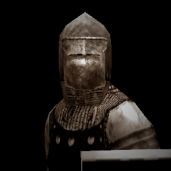



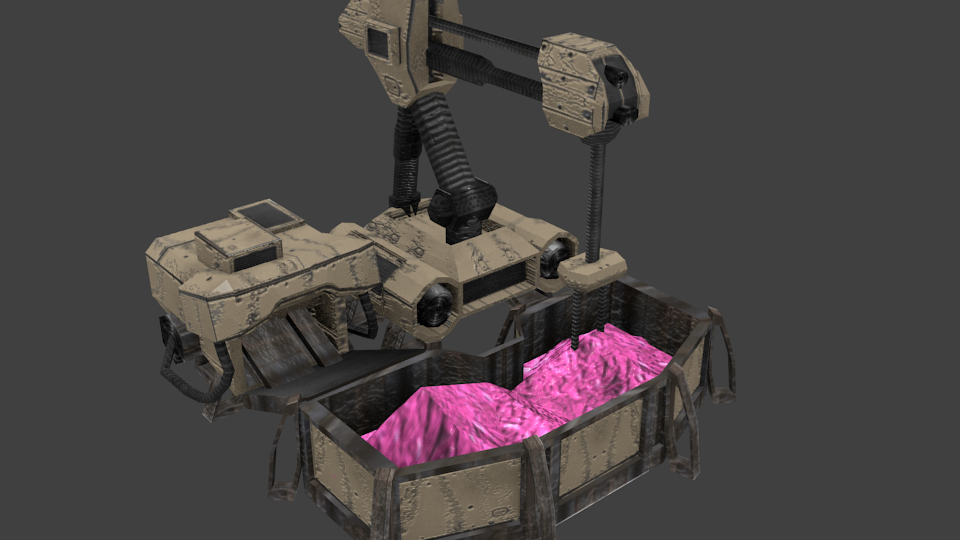
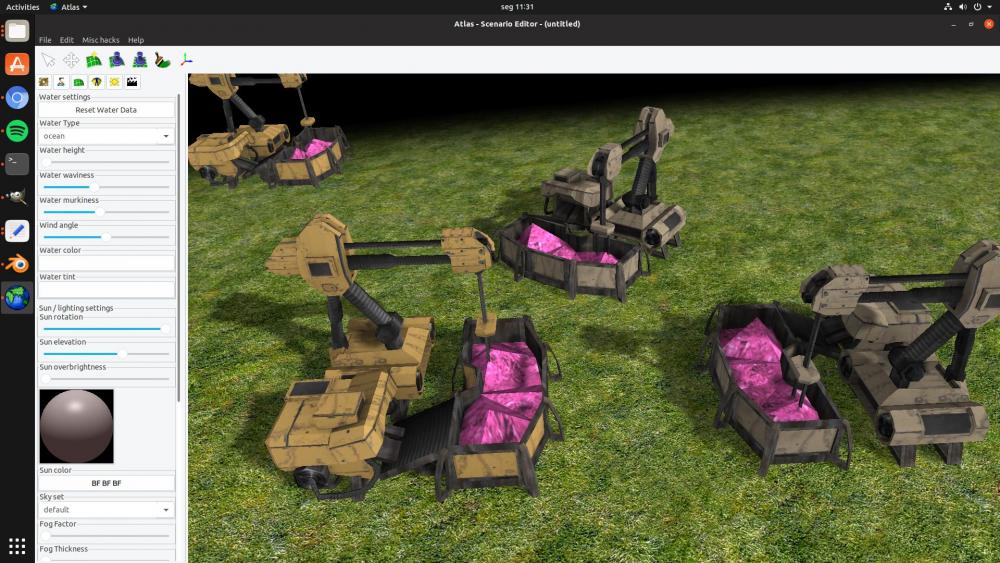

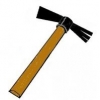

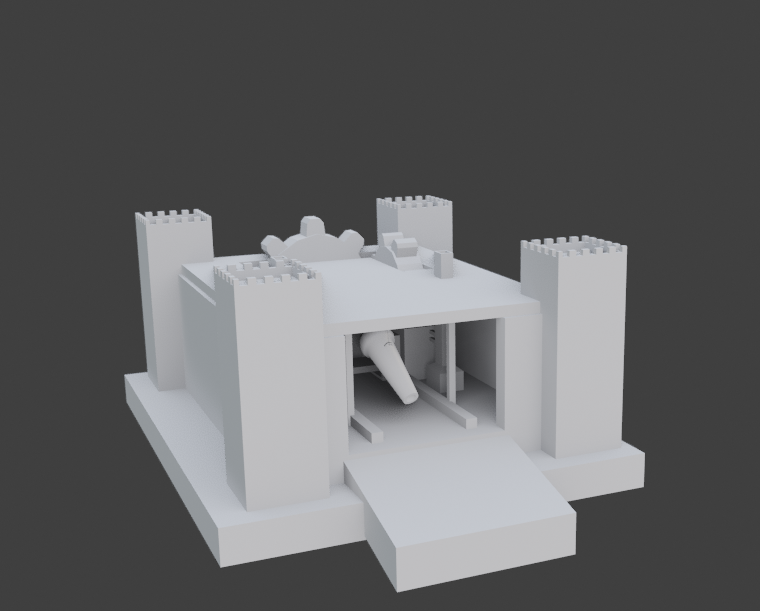
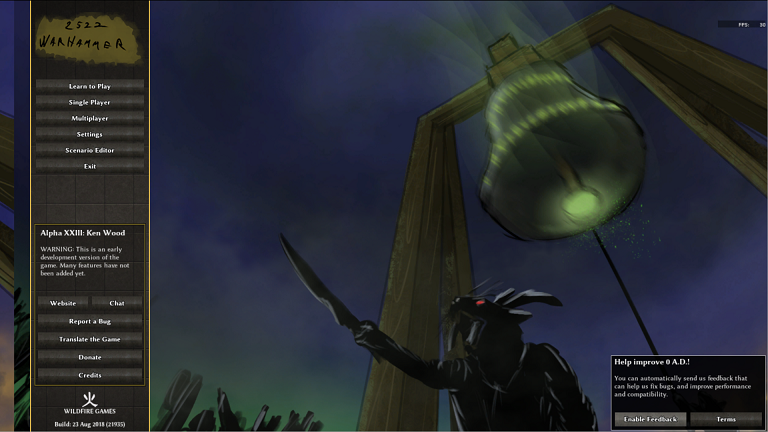
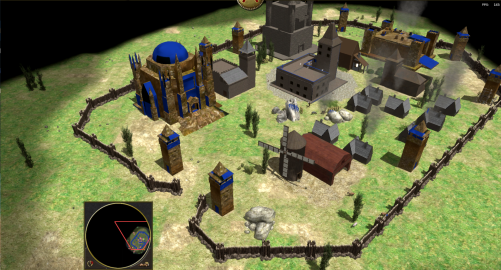
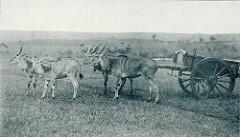
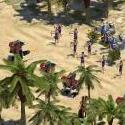



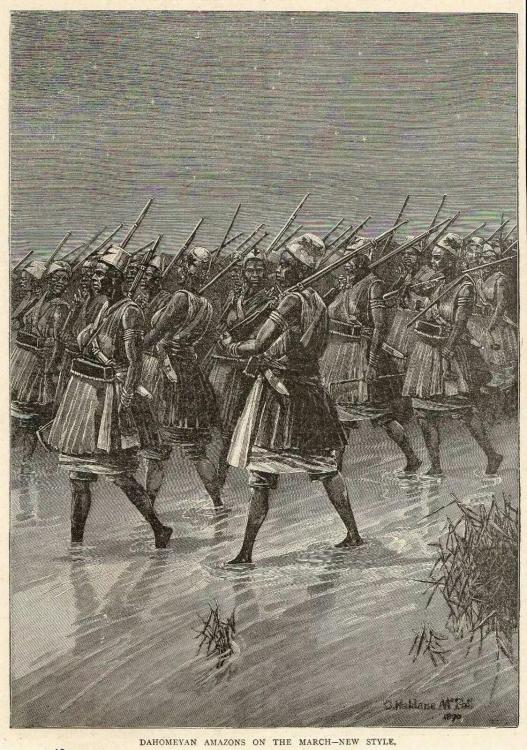
._-_The_veteran_amazones(_AHOSI_)_of_the_Fon_king_Bhanzin_Son_of_Roi_Gl.jpg.e61f1c4633d351d4c8cabfde16184580.jpg)
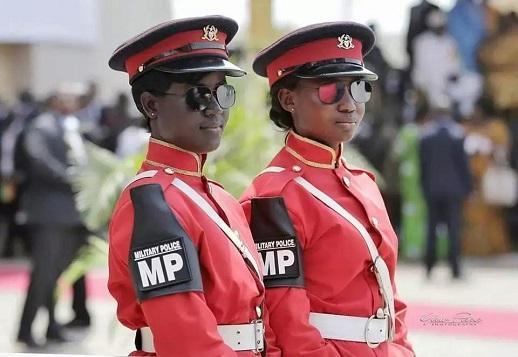
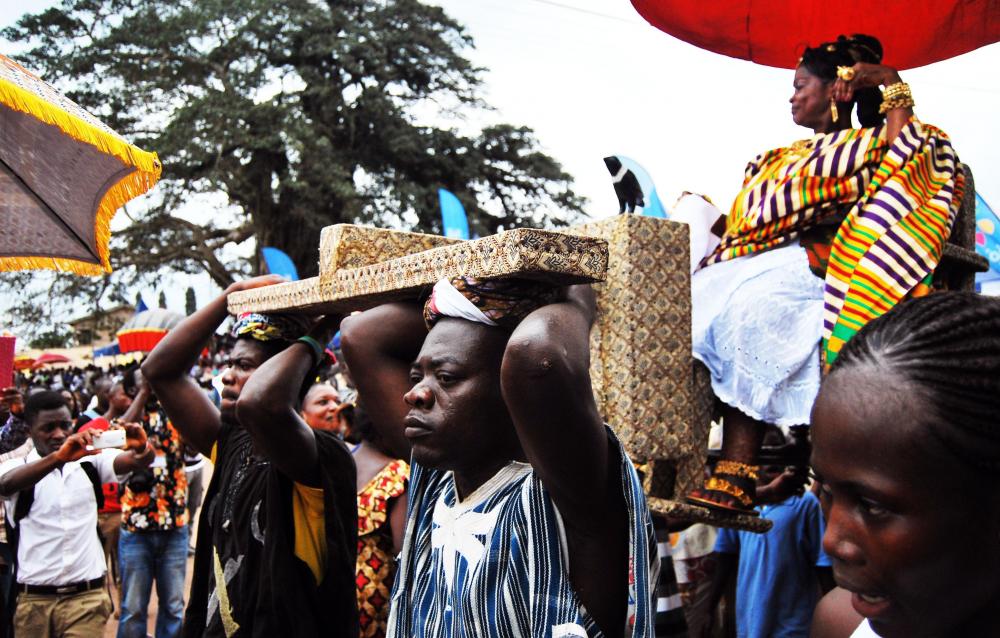
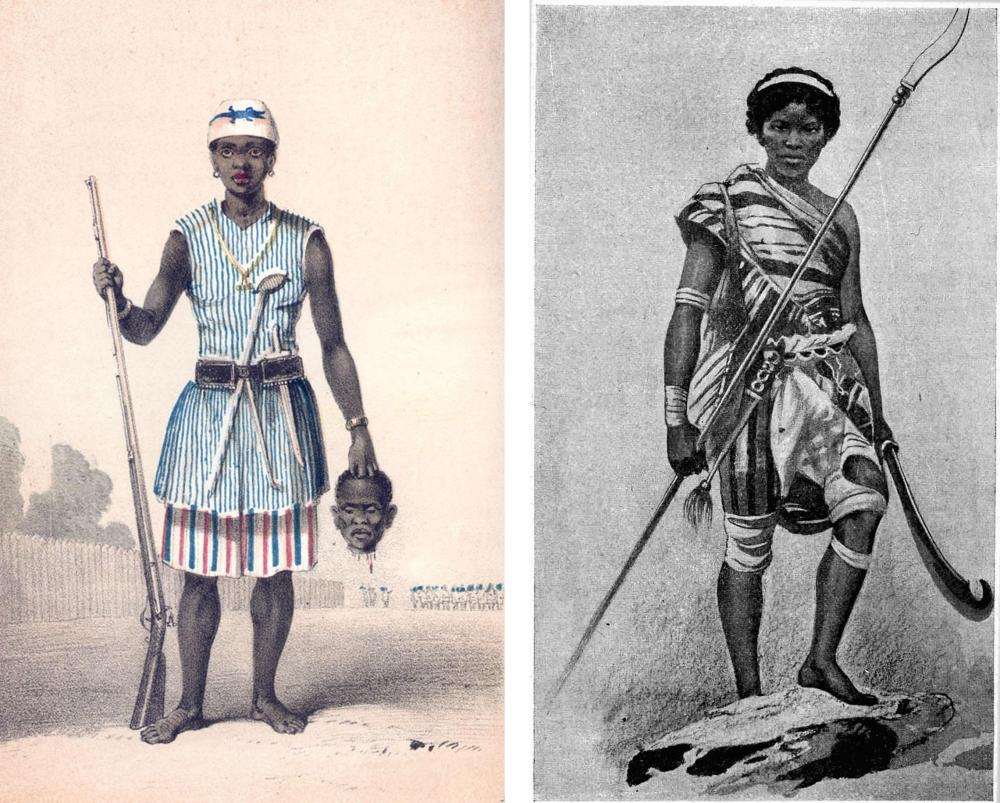
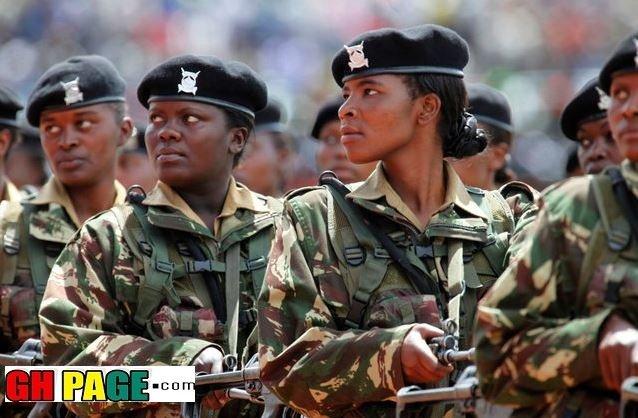
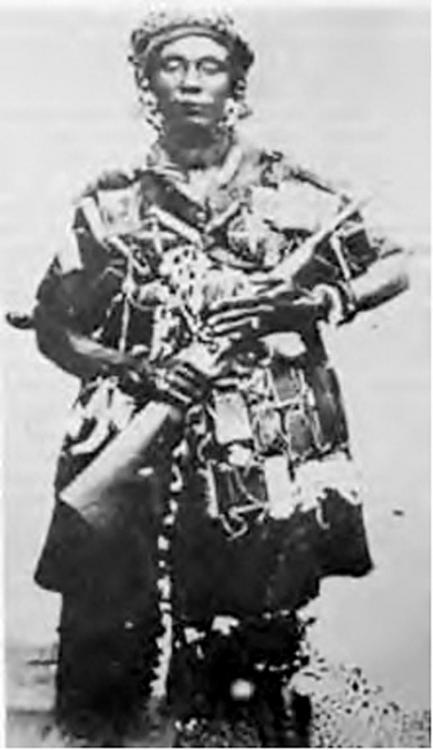

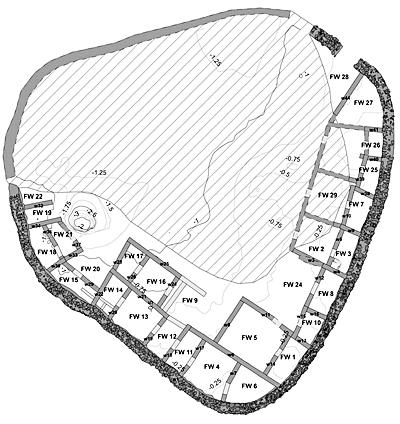
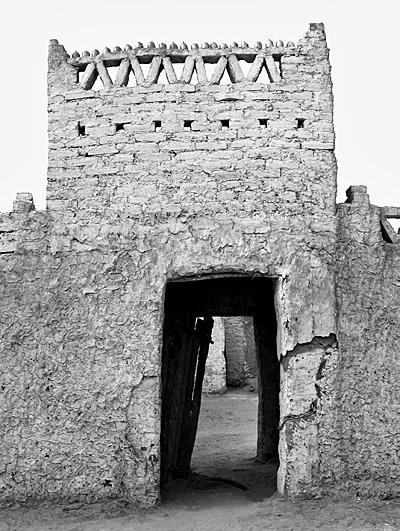
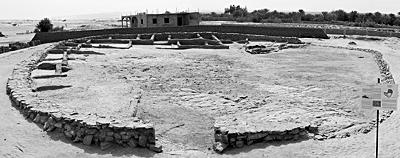
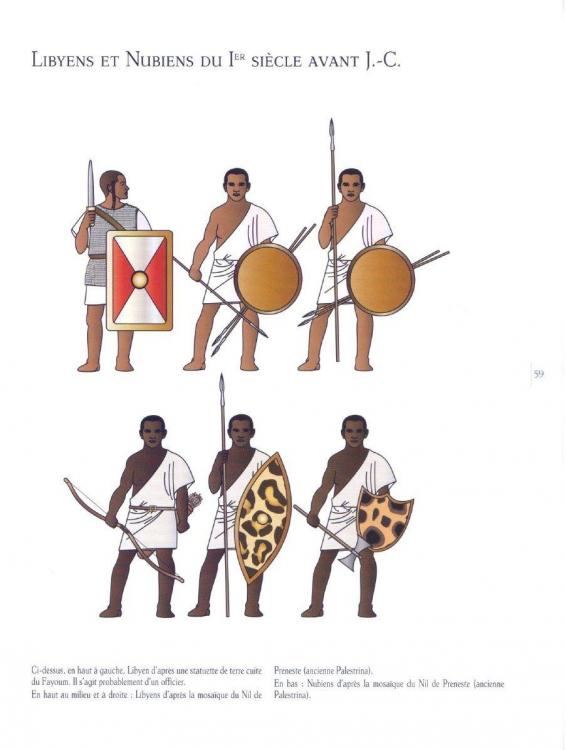
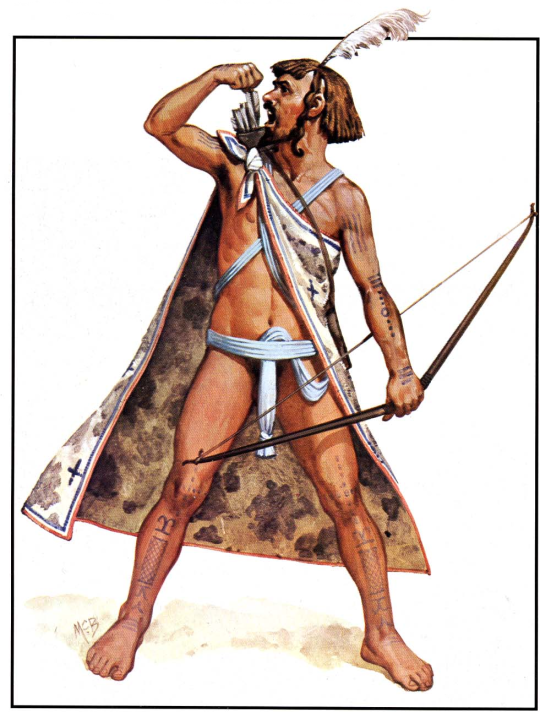
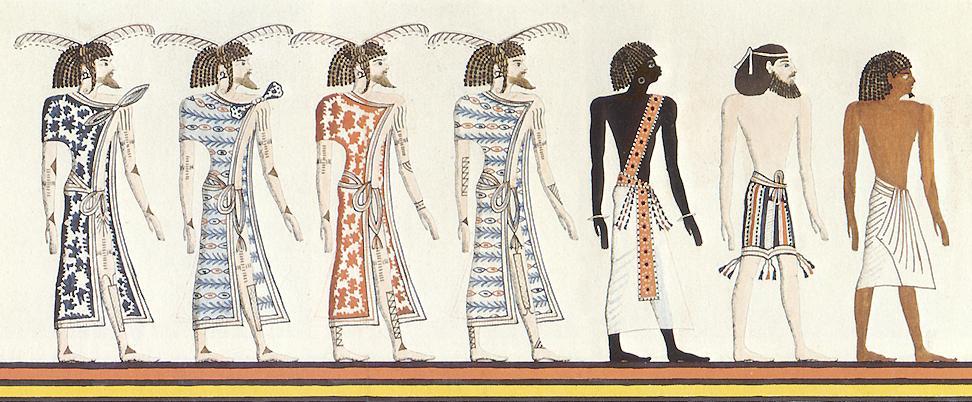
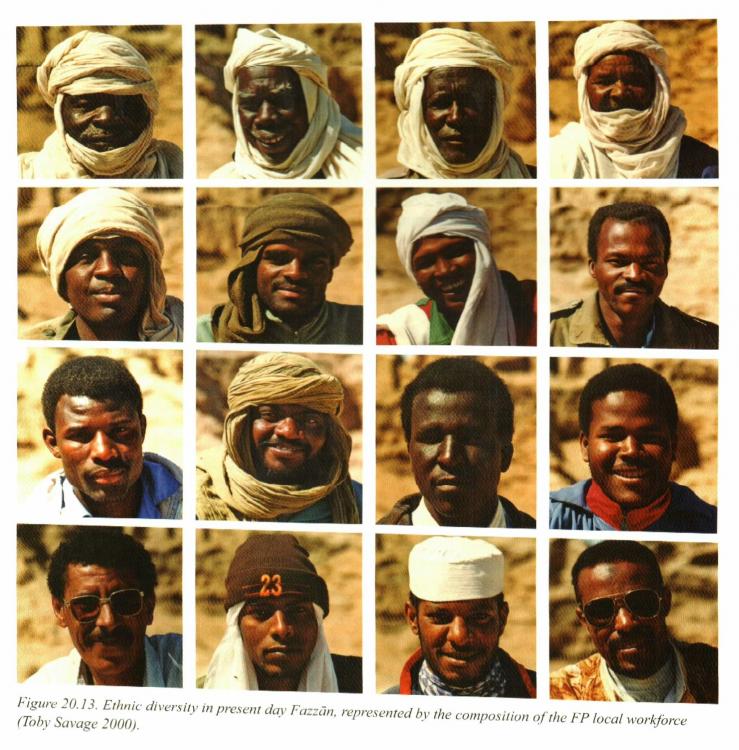
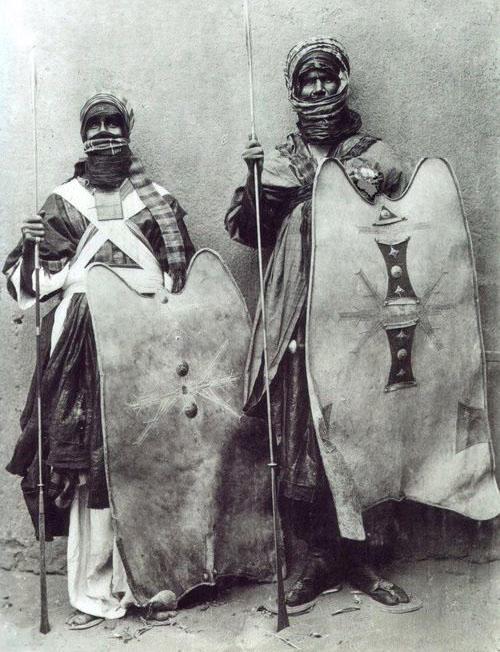
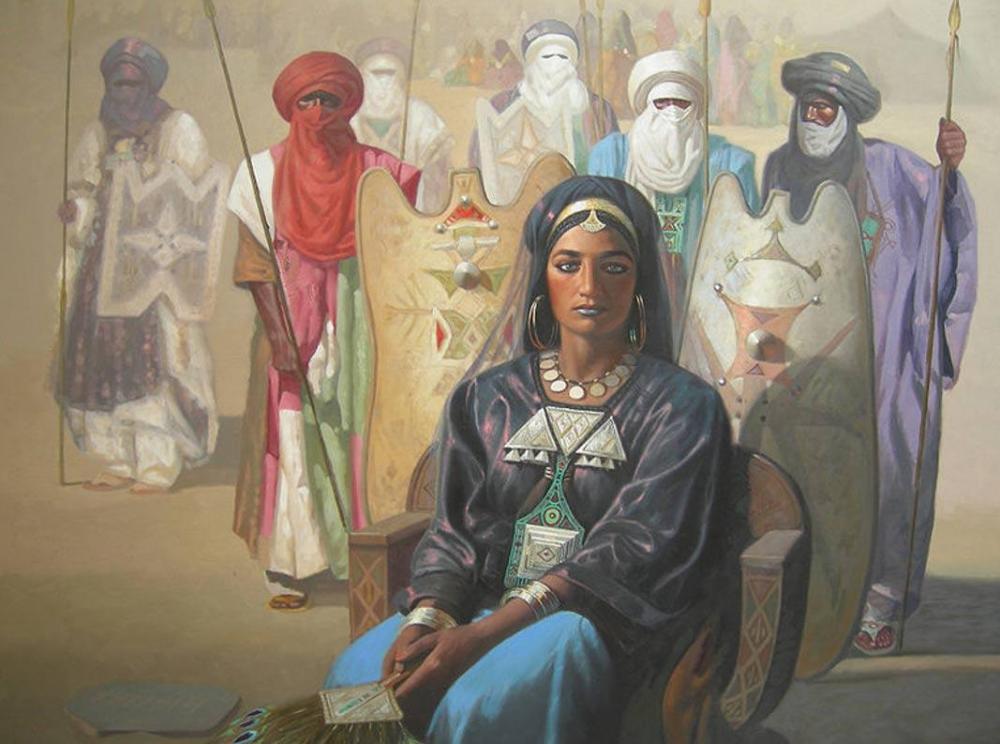
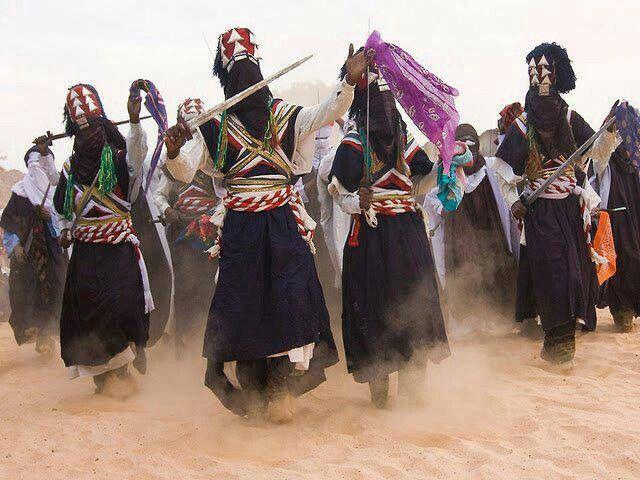
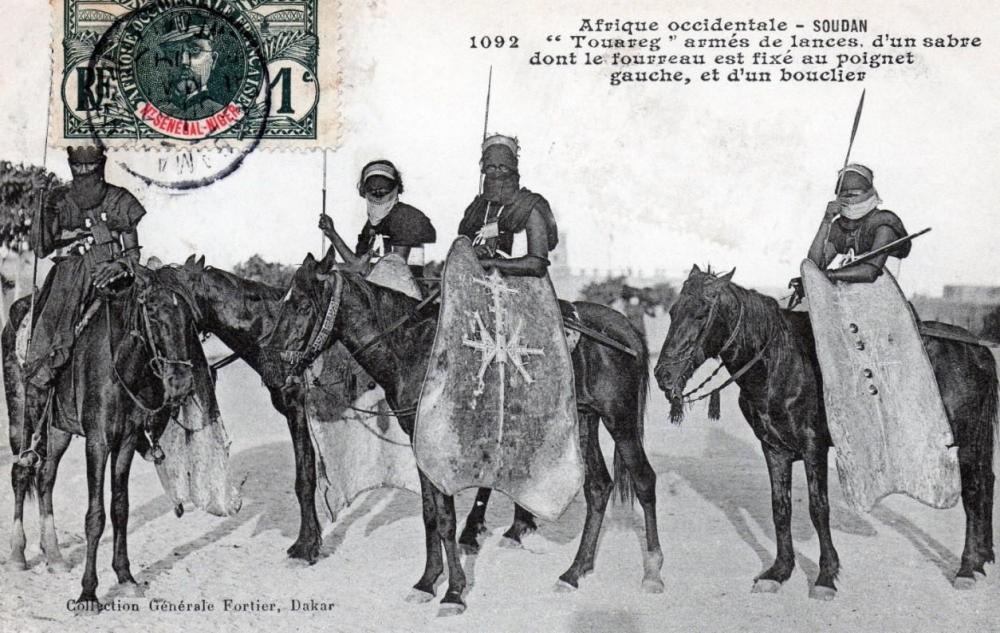
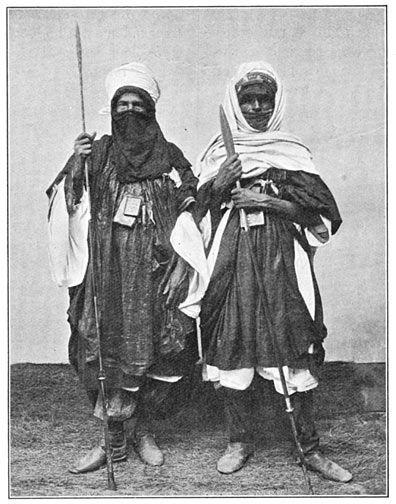
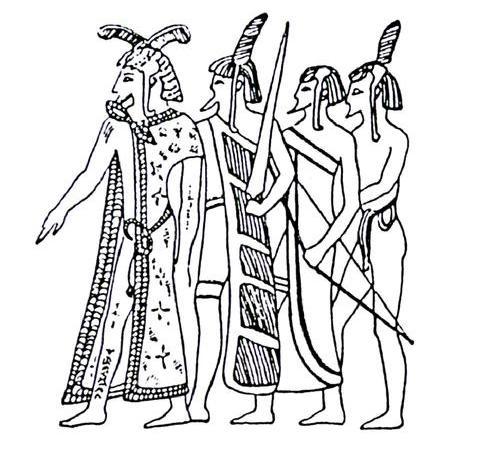
.thumb.png.0d87fc71cb8a644c5d862ceabac1e0d5.png)
